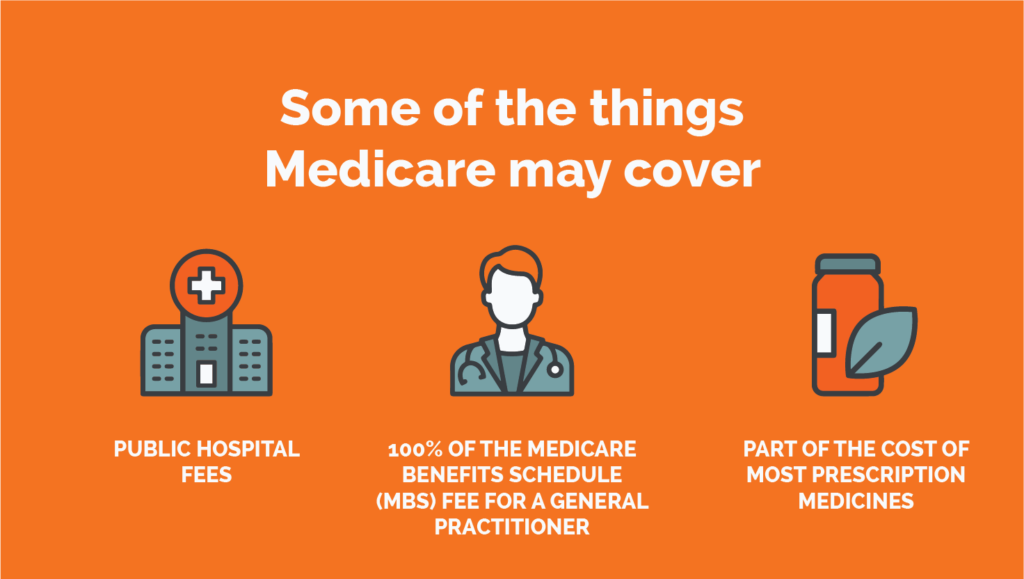The Medicare Levy Explained
The Medicare Levy Explained
Compare Health Insurance Policies
Save time and effort by comparing a range of Australia’s health funds with iSelect
What’s the Medicare Levy?
Why is the Medicare Levy so high?
Who pays the Medicare Levy?
Where can I find a Medicare Levy calculator?
What is the Medicare Levy Surcharge?
How can I avoid the Medicare Levy Surcharge?
Need help understanding how the Medicare Levy and Medicare Levy Surcharge apply to you?
What’s the Medicare Levy?
As Australia’s publicly funded Health Insurance system, Medicare gives every citizen and permanent resident access to healthcare. It provides access to free or subsidised treatment by doctors and specialists, and subsidises treatment for public patients in public hospitals.
It’s partially funded by the Medicare Levy, which is 2% of your taxable income. If you earn over a certain amount and you don’t hold appropriate Private Hospital Cover, you might also be required to pay a Medicare Levy Surcharge, on top of the Medicare Levy paid by all taxpayers, towards the cost of the Medicare system.
Why is the Medicare Levy so high?
Medicare has helped Australians access healthcare for almost 40 years. It’s designed to make sure that all Australians can access the care they need, regardless of their financial situation.
But such a big system takes a lot of money to maintain. In 2022–23 alone, the government spent almost $40 billion on Medicare and the Private Health Insurance Rebate.1Parliament of Australia – Health overview Not to mention that Australia’s healthcare costs definitely aren’t getting any cheaper.
The Medicare Levy funds some of those running costs. It helps the government bring in the necessary tax revenue for Medicare while ensuring they have enough left over to spend on transport, welfare and other necessities.

Who pays the Medicare Levy?
If you’re an Australian taxpayer, then you probably already pay the Medicare Levy as a part of your taxes. The levy is an additional charge to the tax you pay on your taxable income.
That being said, some people are eligible for reductions on the Medicare Levy, and some people are not required to pay the levy at all.
Medicare Levy exemptions
If your taxable income is below a certain threshold, you don’t have to pay the Medicare Levy. In 2022–23, the threshold was $24,276 or less (or $38,365 for people entitled to the seniors and pensioners tax offset).2Australian Tax Office – Medicare levy reduction for low-income earners You could also be eligible for an exemption if you meet certain medical requirements, are a foreign resident, or are not entitled to Medicare benefits.
Medicare Levy reductions
Even if you don’t qualify for an exemption, your Medicare Levy could still be reduced if your taxable income is below a certain threshold. For 2022–23, this reduction applied if your taxable income was between $24,276 and $30,345 (and between $38,365 and $47,956 for people entitled to the seniors and pensioners tax offset).3As above
The Australian Tax Office will determine your reduction when you lodge your tax return.
Where can I find a Medicare Levy calculator?
When you lodge your tax return, the Australian Tax Office (ATO) will use the information you provide to determine what your levy amount is. But if you’re keen to figure it out beforehand (or afterwards, for that matter), there’s an easy way. The ATO offers an online calculator that you can use to work out your Medicare Levy for any financial year since 2013–14.
What is the Medicare Levy Surcharge?
The Medicare Levy Surcharge is an extra fee that some people have to pay on top of the Medicare Levy. It’s designed to reduce demand on Medicare by encouraging people to use the private health system where possible. It does this by giving people a financial incentive to take out appropriate Private Hospital Cover.
As of July 2023, the Medicare Levy Surcharge applies to people earning more than $93,000 as an individual or $186,000 as a family. This is an increase from previous years, but the threshold doesn’t necessarily increase every year (from 2014 to 2023, it stayed the same). It’s calculated at between 1% and 1.5% of your income – the more you earn, the higher the percentage. That means the more you earn, the more it could pay to have Hospital Cover.
How can I avoid the Medicare Levy Surcharge?
You don’t need to pay the Medicare Levy Surcharge (MLS) if you’re a single person with an annual taxable income of less than $93,000, or you’re a couple or family with a combined taxable income of less than $186,000.
If your family’s income is a little above $186,000 and you have more than one dependent child, you might also have an out. The minimum family threshold to pay the surcharge increases by $1,500 for each MLS dependent child after the first. For example, if you have two MLS dependent children, your threshold would increase to $187,500. If your income is below these thresholds, you’re exempt from the surcharge.
But even if you earn more than these thresholds, you can avoid paying the Medicare Levy Surcharge by making sure you have an appropriate level of Private Hospital Cover in place for the entire financial year. For singles, that means your policy needs to have an excess of $750 or less. For couples or families, you need an excess of $1,500 or less. It’s important to remember, though, that if you only hold Extras Cover, with no Hospital Cover, you’ll still need to pay the Medicare Levy Surcharge.
Need help understanding how the Medicare Levy and Medicare Levy Surcharge apply to you?
It can be difficult to figure out whether the Medicare Levy Surcharge applies to you, and how much you’re likely to pay. If you’re confused, feel free to call us on 1800 784 772. You can also compare a range of Private Health Insurance Policies online with iSelect and ensure your current policy is suitable for you.

.svg)






